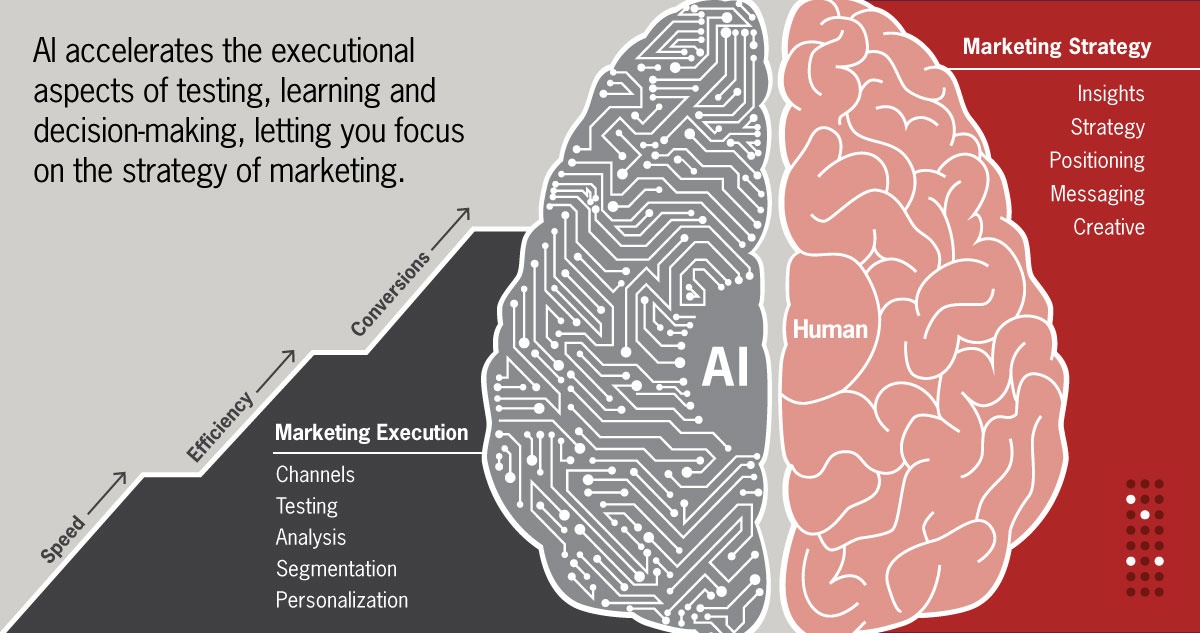
We’re on the cusp of a radical shift in the way that marketers create, measure, and optimize the experiences we’re providing for our customers. Artificial intelligence and its applications in marketing are going beyond the proof-of-concept stage and emerging as a tool to drive real change within organizations.
Companies are using AI today to make practical use of the customer data they gather. While businesses recognize the value of first-party data, they have not had the resources to quickly and efficiently analyze it and apply their conclusions to develop and test strategies. They are using AI to analyze the large volume of structured and unstructured data, at greater speed and efficiency than human resources are able to achieve. It helps them identify behavioral trends, determine the optimal set of variables for a campaign, test conclusions in the market, analyze the results, and optimize for improved performance. AI, for example, can determine the optimal bid for an impression and the message to deliver based on the prospect’s profile, the channel they are using, and the time of day. AI is lowering costs, increasing overall marketing efficiency, and shortening the path to conversion.
The most visible applications of AI in marketing today are in media management and customer experience. Search engines and social media use AI to deliver the right message to the right audience, at the optimal price. Google’s automated bidding sets your bids based on your campaign objectives, resulting in more efficient final bid costs. Google will even apply this capability to enhance manual bidding for improved results.
AI is improving customer experience during routine interactions too. Chatbots, for example, can manage low and mid-level inquiries, reducing costs while increasing customer satisfaction. Marketers are now learning when to switch from a chatbot to a human interaction for inquiries where customers require a deeper response.
And marketers are applying AI to content creation and curation, enabling them to produce and publish various types of content with greater efficiency and higher response. Recently, Alibaba released an AI-driven copywriting tool that it claims is capable of producing 20,000 lines of copy per second. AI can be used to guide writers in their efforts, identifying the types of headlines and themes that readers are more likely to respond to.
If you’re not using AI now, you likely will be in the next few years. According to a recent study from PwC, 72% of business decision makers see AI as fundamental for future success and a significant business advantage. However, we’re not quite there yet. Only 15% of enterprises are currently using AI. Further, a recent report from the Economist Intelligence Unit shows that 75% of executives say AI will be actively implemented in the next three years.
Today, many larger enterprises are applying AI. While these early adapters have the resources to apply the capabilities, cloud-based services from Google, Amazon, Microsoft, Alibaba and others are evolving to make AI practical for SMBs as well.
In short, marketers are accepting that AI will have a key role in the future of marketing, and we’re working hard to figure out exactly what that means for our organizations. At Trellist, we believe AI will prove its value quickly, and the adoption
rate will be fast among organizations of all sizes.
Learn more of how Trellist approaches new and evolving business problems by checking out the rest of our blogs here.












